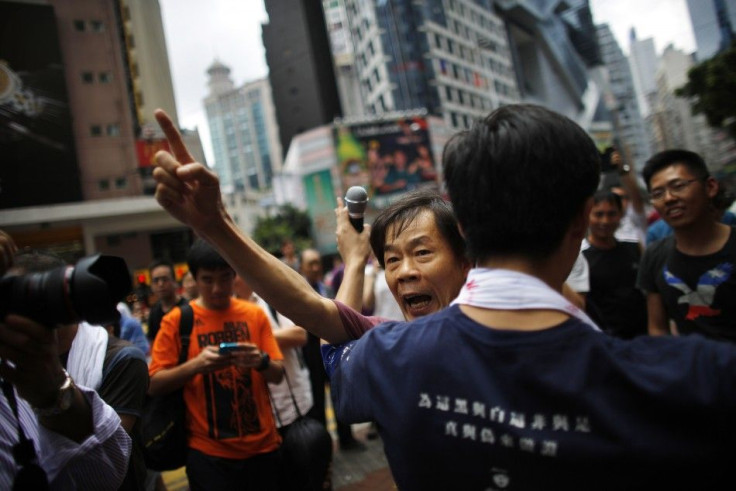Hong Kong Protest in Photos, Video Captures Magnitude of Action

The Chinese government is doing two kinds of crisis management as far as the growing Hong Kong protest. How to control it on the ground and how to control it on the Web.
On its fifth day on Tuesday, Chinese authorities have been practically busy scouring the Web for photos and news about the continuing demonstrations in Hong Kong's streets. Authorities are "on top of the situation 24/7," the New York Times quoted Charlie Smith, co-founder of Greatfire.org, a group that tracks Internet censorship in China.
People in the semi-autonomous city, but still officially under Chinese rule, are protesting China's refusal to allow them choose their candidates for Hong Kong's leader in the city's first democratic election. The activity has been scheduled for 2017.
Despite the Web crackdown, pro-democracy protesters managed to circumvent around China's Internet guardians by posting and commenting on nonpolitical Web sites, even music sites.
Hashtags OccupyCenter and UmbrellaRevolution were born. Words such as "barricades" were explicitly used by people in Hong Kong to reach out to the world. Authorities have been able to control the exposure of photos carrying those hashtags and words, but this was only to mainland resident-users in China. People from around the world, even those in Hong Kong, can see and view them.
Devoid of Instagram and Twitter, Hong Kong protesters are now using FireChat to spread their sentiments to the mainland and the world. USA Today described FireChat as a messaging app good for both iOS and Android users.
Quoting Christophe Daligault, chief marketing officer of Open Garden, creator of the app, USA Today reported a whopping 100,000 new sign-ups has emerged on FireChat from Hong Kong in less than 24 hours. About 800,000 chat sessions have been also registered.
The Vox also carried a report about an unmanned drone with a video camera that was able to capture the magnitude of the Hong Kong protests, which protesters said will move forward right smack on the anniversary of the Communist Party's foundation of the People's Republic of China.
"I don't know what the police or government will do to me, but I am 100 per cent sure I need to come out (on National Day celebrations)," Ken To, a restaurant manager in the Mong Kok residential district, told NY Daily. "We (Hong Kongers) don't only want money. We want our kids, our future, our education."
The drone video below.
YouTube/Storyful





















